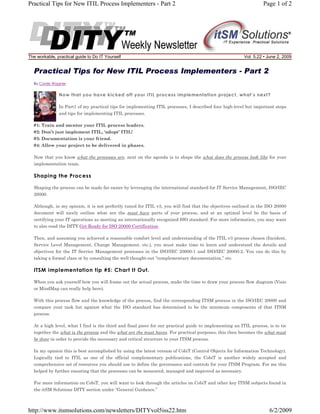This two-part document provides tips for implementing ITIL processes. Part 1 discussed training process leaders, adopting rather than just implementing ITIL, using documentation, and implementing in phases. Part 2 recommends shaping processes using ISO/IEC 20000 as a guide, drawing process flow diagrams, and ensuring processes meet ISO, ITIL, and COBIT standards. It emphasizes becoming an expert in these frameworks to define well-formed and measurable IT processes.

